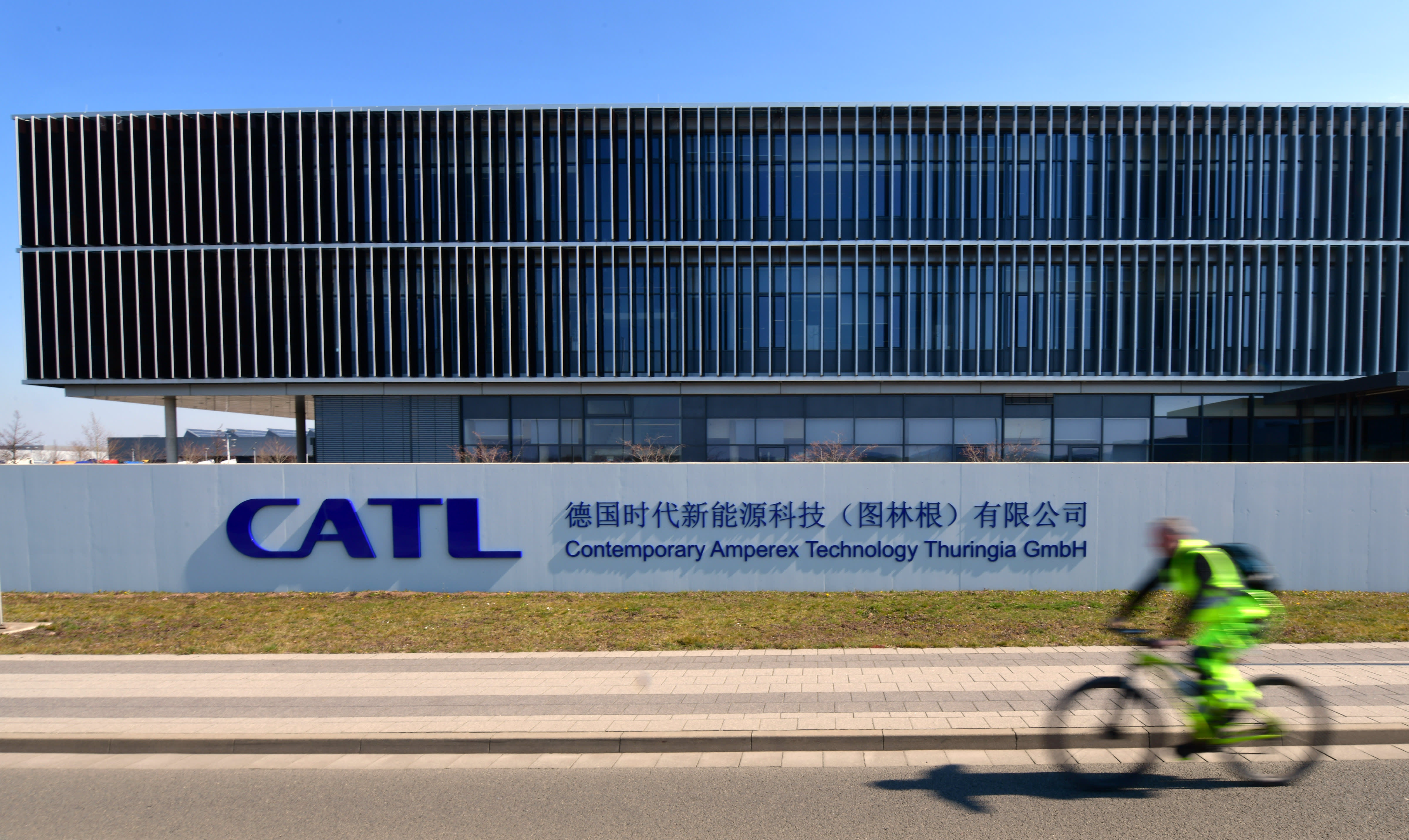
Chinese battery giant Contemporary Amperex Technology (CATL), pictured here on April 2, 2020, broke ground on its first overseas factory in Germany in late 2019 and plans to add up to 2,000 jobs there by 2025.
Martin Schutt | picture alliance | Getty Images
BEIJING — Chinese companies invested more in consumer sectors and the electric vehicle supply chain worldwide, even as geopolitics restricted overall outbound capital flows, according to a report released Wednesday by Baker McKenzie and Rhodium Group.
Consumer products and services held the largest share of completed mergers and acquisitions last year, at $5.2 billion, up from $1.1 billion in 2020, according to the data. That still fell short of pre-pandemic levels of $10 billion in deals in 2019.
However, White House restrictions on inbound Chinese investment in tech and Beijing’s efforts to keep capital within national borders have contributed to a decline in Chinese overseas deals. The high-tech and real estate sectors have been particularly hard hit, according to a release.
Overall, completed overseas mergers and acquisitions by Chinese companies dropped to $23.7 billion in 2021, down from $29.5 billion in 2020 and marking a fourth-straight year of decline, according to Rhodium Group data.
Including other forms of foreign direct investment, Chinese deals rose to $138 billion in 2021, up from $134 billion in 2020 and $117 billion in 2019, in line with a 71% increase in mergers and acquisitions globally between 2021 and 2020, the release said.
Chinese companies’ direct investment in local subsidiaries, known as greenfield investment, in Europe and North America grew last year to $5.5 billion, from $4.7 billion in 2020 and $3.6 billion in 2019, the data showed.
The growth last year came from increased investments in Europe.
Several of the new greenfield projects the release listed for Chinese companies were of investments in the electric vehicle supply chain in Europe.
For example, Chinese battery giant Contemporary Amperex Technology (CATL) broke ground on its first overseas factory in Germany in late 2019 and plans to add up to 2,000 jobs there by 2025, with up to 1.8 billion euros ($2.03 billion) in investment.
The total value of this and other deals in the auto supply chain could exceed $14.5 billion in the next two years, according to the Baker McKenzie release.
The expansion comes as Chinese electric car start-ups like Nio look to Norway, Germany and other European markets. Major American and European automakers are also quickly shifting to electric vehicle production.
“Chinese EV companies are eager to build out their own supply chains so they can leapfrog traditional car manufacturers and jump to the cutting edge,” Mark Witzke, an analyst at Rhodium Group, said in an emailed statement.
“Using a combination of both acquisitions and greenfield investment, Chinese companies have been going worldwide in order to build out these supply chains,” Witzke said. “It will likely be a growing area of investment as shortages and competition over acquiring EV materials continues. While many of these companies are incentivized by state direction or subsidies, it is mostly private companies rather than [state-owned enterprises] driving this trend.”
Latin America looks to China, away from the U.S.
Part of the build-up of Chinese investment in the electric vehicle supply chain is concentrated in Latin America.
Chinese mining companies have spent more than $4 billion on lithium and cobalt mining and processing assets in Latin America and Africa over the last three years, according to the Baker McKenzie release.
During the same time, Chinese state-owned enterprises have spent more than $13 billion on energy utilities and clean energy assets in Chile, Mexico, Brazil and Spain.
Devaluation in Latin American currencies relative to the U.S. dollar has made assets more attractive in the region, Alejandro Mesa, Latin American regional coordinator of the international commercial & trade practice group at Baker McKenzie, said in the release.
“Second, there are an important number of governments who have expressed interest in working with China as a business partner over more traditional partnerships with the US,” Mesa said. “Third, China has more appetite for long-term investment in the region, as it is likely that economies improve in the mid-term to long-term, thus creating a good moment for selling. In 2022, we expect China to invest heavily in telecommunications and infrastructure, apart from a continuation of more traditional investments in commodities.”
Completed Chinese mergers and acquisitions in Latin America reached $3 billion in 2021, the fourth-largest region for deals, the release said.
Foreign companies have also increased their investment into China, up by 14.9% year-on-year to 1.1 trillion yuan ($171.88 billion) in 2021, according to China’s Ministry of Commerce.
Investors from Singapore and Germany increased their investment by 29.7% and 16.4%, respectively, the ministry said Tuesday, without disclosing figures for other countries.
Source: CNBC
